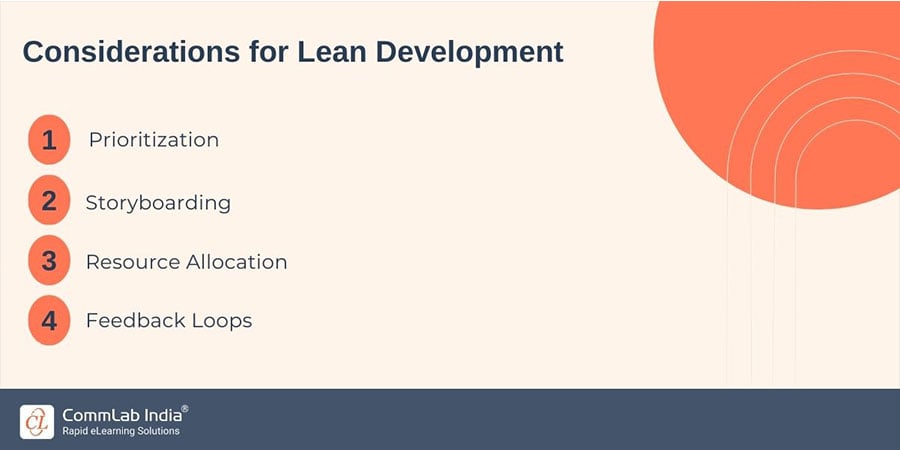Unlocking Success: The Impact of Video-Based Learning in Corporate Training

In the digital age, where a staggering 1 billion hours of content are consumed on YouTube daily, it's evident that videos have transformed not only entertainment but also how we learn. This is also a reason why video-based learning emerged as one of the most sought-after ways to deliver corporate training.
Video-based learning is transforming corporate training by bringing knowledge to life, making it accessible, and fostering engagement.
It offers:
- Visual Engagement
- Flexibility and Accessibility
- Efficient Knowledge Transfer
In this blog, we'll delve into the world of video-based learning for corporate training, exploring value proposition, opportunities, available tools, lean development strategies, and essential design principles.
Let us start with the value proposition – What is the Viewer Getting Out of it? This is the key question to start with.
1. Value Proposition: Delivering Learning Impact
When integrating videos into your corporate training strategy, it's essential to consider the value proposition. Start with the question – what is the viewer getting out of the video?
Based on this question, highlight the benefits that the employees will gain from a video presented as a part of corporate training.

Apart from knowledge delivery, videos for corporate training offer benefits such as
- Shareability: Videos are highly shareable, enabling learners to exchange knowledge and insights easily within the organization. This not only promotes collaborative learning but also fosters a sense of community and knowledge sharing among employees.
- Speed for Delivery: Videos deliver information rapidly, making them ideal for time-sensitive training needs. Whether it's an urgent compliance update or a quick product demo, videos allow you to disseminate crucial information efficiently.
- Impact: The visual and auditory nature of videos can create a lasting impact, aiding knowledge retention and application. Incorporating compelling visuals, real-life scenarios, and emotional storytelling can enhance the emotional connection learners have with the content, making it more memorable and actionable.
- Accessibility: Videos can be accessed at any time and from any location with an internet connection, providing learners with convenient access to training materials. This accessibility is particularly valuable for remote or geographically dispersed teams.
These are the unique benefits that videos offer, and it is very important that the learning and development (L&D) team recognizes and leverages them by creating relevant eLearning content. Next, training developers need to focus on the different opportunities to use the videos.
2. Opportunities: Diverse Types of Training Videos
The versatility of video-based learning offers a plethora of opportunities to cater to various training objectives.
Consider the following types of training videos:
Awareness Videos: Introduce new policies, initiatives, or industry changes at the start of a training program.
Readiness Videos: Prepare teams for upcoming challenges with realistic scenarios and case studies.
Stimulating Prior Experience: Relate to employees' prior knowledge to enhance content relatability.
Informative Videos: Deliver essential knowledge concisely to establish a solid foundation.
How-To Videos: Simplify complex processes with step-by-step guides, ideal for hands-on training.
Reflect or Review Videos: Encourage self-assessment and retention after training sessions.
Transfer Preparation Videos: Bridge theory and practice, equipping employees with practical skills.
Remember, choose the video type that aligns best with your training goals and learner needs to create an effective and engaging learning experience. The next step is about video production, for this, you will have to identify the available tools. Let‘s discuss this in detail.
3. Available Tools: Empowering Your Video Creation
Whether it's professional video editing software or user-friendly online platforms, choose tools that match your team's skills and the complexity of your training content.
Here are some examples of video production tools:
Professional Editing Software: Tools like Adobe Premiere Pro and Final Cut Pro offer advanced editing capabilities, ideal for creating polished and high-quality training videos. They provide a wide range of features for precise control over video and audio elements.
User-Friendly Video Editors: For teams with varying levels of expertise, user-friendly editors like Camtasia and iMovie are excellent choices. They offer intuitive interfaces, making it easier to create videos without extensive training.
Animated Video Software: Tools like Vyond allow you to create animated explainer videos and presentations, making complex concepts more accessible and engaging.
Webinar Platforms: Platforms such as Microsoft Teams and Zoom provide robust webinar capabilities, facilitating live training sessions and interactions with remote learners.
Next, your focus should be on optimizing your development...
→ Download Now: Explore the What, Why, and How of Video-Based Learning [Infographic]
4. Lean Development: Streamlining Your Video Production
Efficiency is critical in corporate training. To achieve lean video development, it's essential to streamline your production processes.
Here's a more critical perspective on this aspect:

Prioritization: Identify the most critical training content that requires video-based learning. Focus your resources and efforts on creating videos that address high-impact learning objectives and essential skill development.
Storyboarding: Develop detailed storyboards before production to ensure a clear and efficient execution of your video content. Storyboards help you plan each scene, minimizing unnecessary reshoots and edits.
Resource Allocation: Allocate your resources judiciously. This includes assigning roles and responsibilities within your video production team, ensuring that each member understands their role in creating high-quality training content.
Feedback Loops: Establish feedback mechanisms to gather input from both subject matter experts and learners. Regular feedback ensures that your videos remain aligned with training goals and learner expectations.
Once everything is in place, you will have to zero in on the design principles, which is the final leg before producing the eLearning videos.
5. Design Principles: Crafting Effective Video Learning
Effective video-based learning doesn't happen by chance. Incorporate sound design principles.
Here are the principles that make for an impactful video:
- Engagement: Capture learners' attention through compelling visuals, storytelling, and relatable scenarios.
- Clarity: Ensure that the message is clear and the content is easy to understand.
- Interactivity: If possible, add interactive elements within videos to enhance engagement and knowledge application.
Summing Up
Video-based learning has revolutionized corporate training by offering rapid, engaging, and impactful learning experiences. When considering video for training, think about the value it brings, the diverse opportunities it offers, the tools at your disposal, efficient development processes, and the principles of effective design. By harnessing these aspects, you can unlock the full potential of video-based learning and elevate your corporate training initiatives to new heights.
Want to know more about video-based learning? Here's an infographic to help you...
Download now!


![Video-based Learning — The Go-to Strategy for Modern Learners [Infographic]](https://no-cache.hubspot.com/cta/default/59327/01a6bcb1-79c8-44e5-ade9-be0c530d9ae3.png)
![Tips for Implementing Blended Learning [Infographic]](https://blog.commlabindia.com/hubfs/Imported_Blog_Media/implementing-blended-learning-tips-infographic.jpg)
![Implementing Blended Learning? A Quick Reference for Training Managers [Infographic]](https://blog.commlabindia.com/hubfs/Imported_Blog_Media/blended-learning-quick-reference-infographic.jpg)
![Blended Learning Models: When to Use What [Infographic]](https://blog.commlabindia.com/hubfs/Imported_Blog_Media/blended-learning-models-choose-right-fit.png)